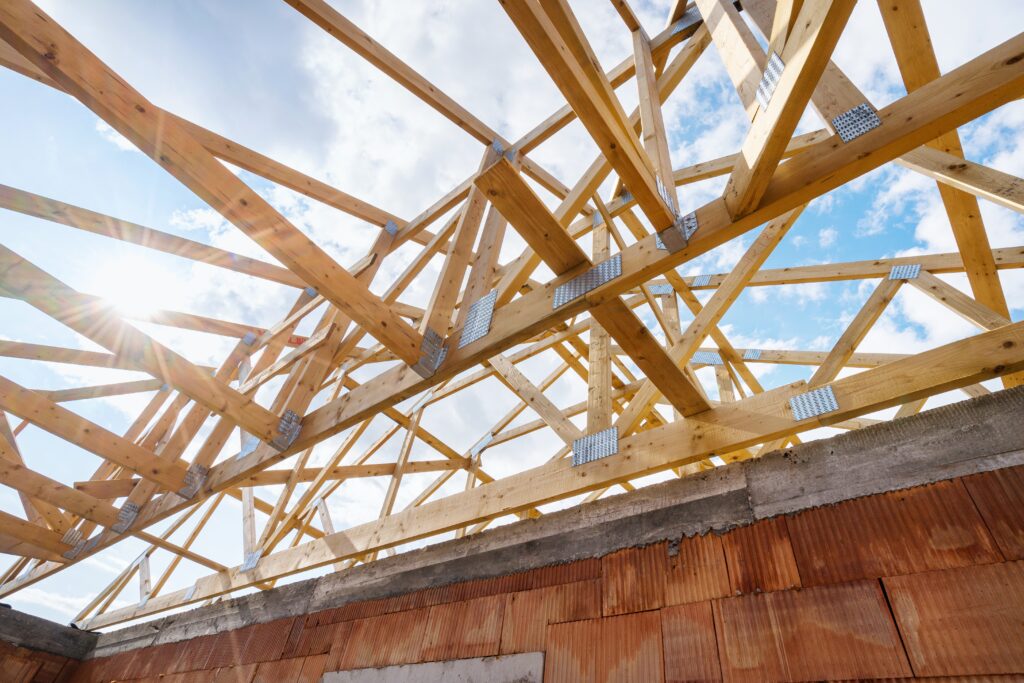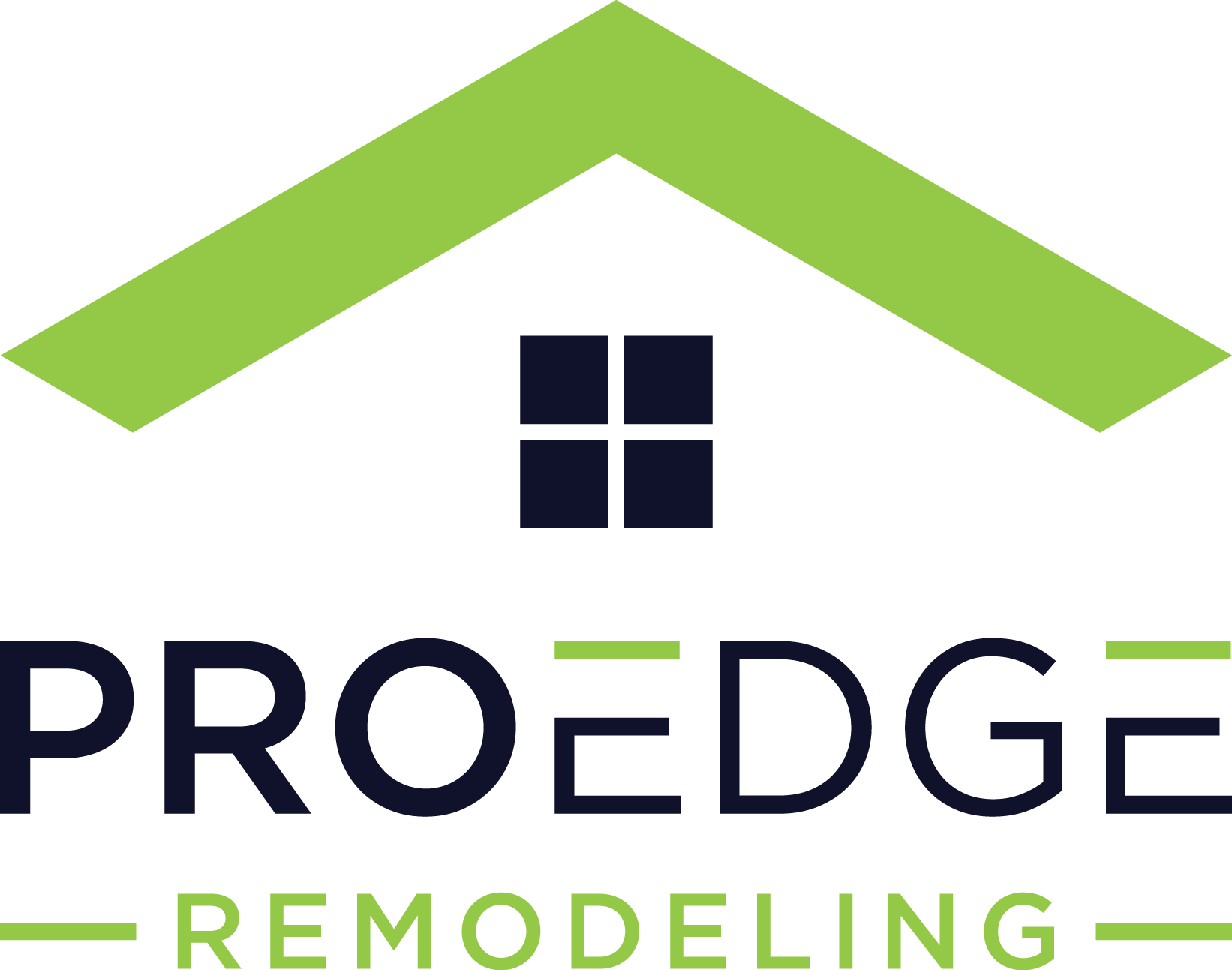How to Design Roof Trusses

Roof trusses might not be the most exciting part of home design, but they’re the backbone of your roof’s structure—literally.
These triangular frameworks support your roof while distributing weight evenly to keep everything sturdy and secure. Whether you’re building a new home or renovating an existing one, getting the truss design right is crucial for both structural integrity and energy efficiency.
A well-designed truss system can handle heavy loads, improve ventilation, and even help you save on heating and cooling costs. But before you dive into the design process, there are a few key factors to consider, like material choice, load-bearing requirements, and the overall shape of your roof.
In this guide, we’ll break down everything you need to know about designing roof trusses so you can make informed decisions.
Table of Contents
Understanding Roof Trusses
Roof trusses are an essential part of your home’s structure, acting as the framework that supports your roof while evenly distributing its weight. Unlike traditional framing methods, which rely on individual rafters, roof trusses are prefabricated triangular structures that provide greater strength and stability.
They’re designed to handle heavy loads, whether it’s the weight of roofing materials, insulation, or even snow accumulation.
Roof Trusses vs. Traditional Rafters
If you’ve ever seen a classic A-frame attic with exposed beams, you’ve probably come across traditional rafters. These are individual wooden beams that run from the peak of the roof down to the exterior walls, typically requiring a ridge beam and additional internal supports.
While rafters offer a more open attic space, they can be expensive and time-consuming to install because each beam has to be cut and placed on-site.
Roof trusses, on the other hand, are built in a controlled factory setting and then delivered to your home for quick assembly. Their triangular design provides excellent load-bearing strength while using less material, making them more cost-effective.
Plus, they don’t require interior load-bearing walls, which can open up more design possibilities inside your home. The downside? Trusses can limit attic space since they often include diagonal bracing, but for most homeowners, the trade-off in efficiency and affordability is worth it.
Common Types of Roof Trusses
Depending on your home’s design and needs, you can choose from several different truss styles. Here are some of the most popular ones:
- King Post Truss – The simplest truss design, featuring a single vertical post in the center. Great for smaller spans, such as porches or sheds.
- Queen Post Truss – Similar to the king post but with two vertical posts, making it suitable for slightly wider spans.
- Fink Truss – One of the most commonly used residential trusses, featuring a “W” shape for added strength and support over longer spans.
- Scissor Truss – Perfect for vaulted ceilings, as it creates a sloped interior while maintaining structural integrity.
- Attic Truss – Designed with an open space in the middle, allowing for a usable attic or storage area without sacrificing roof strength.
Each type of truss serves a specific purpose, so choosing the right one depends on factors like your home’s layout, the amount of attic space you need, and your region’s climate conditions. With the right truss design, you’ll have a roof that’s not just strong and functional but also tailored to your home’s needs.
Key Factors to Consider When Designing Roof Trusses
Designing roof trusses isn’t just about picking a shape and calling it a day—there are several key factors that impact their strength, efficiency, and overall performance.
From handling weight loads to choosing the right materials, here’s what you need to consider when planning your truss design.
1. Load-Bearing Requirements
Your roof isn’t just sitting up there for looks—it has to support a variety of weights, which are categorized as live loads and dead loads.
- Live loads include temporary forces like snow, wind, and even maintenance workers walking on the roof. If you live in an area with heavy snowfall or high winds, your trusses need to be strong enough to withstand these forces without sagging or failing.
- Dead loads refer to the permanent weight of the roof itself, including materials like shingles, tiles, plywood, and insulation. These loads need to be accounted for to prevent long-term structural issues.
Your local climate plays a huge role in how your trusses should be designed. Homes in snowy regions need reinforced trusses that can handle the extra weight, while homes in hurricane-prone areas need trusses built to resist high winds and uplift forces. Choosing the right design for your location ensures your roof stays strong and secure in all conditions.
2. Truss Span and Pitch
The span of a truss is the distance it covers between two load-bearing walls, and this determines how much weight the truss must support. Larger spans require stronger trusses or additional support to prevent structural issues.
The pitch, or slope, of your roof also plays a big role in both function and appearance. A steep pitch not only looks more dramatic but also helps with:
- Water drainage – Steeper roofs shed rain and snow more easily, reducing the risk of leaks.
- Energy efficiency – Higher roof pitches can allow for better attic ventilation and insulation placement, improving overall efficiency.
- Aesthetics – The pitch affects your home’s curb appeal, making it look more traditional or modern, depending on the design.
Choosing the right balance between span and pitch ensures that your roof is both visually appealing and structurally sound.
3. Material Selection
When it comes to trusses, wood and metal are the two main options, and each has its own pros and cons.
Wood Trusses
- Cost-effective and widely available
- Easy to cut and customize
- Provides good insulation properties
- Can warp or rot over time if not properly maintained
- Susceptible to termites and moisture damage
Metal Trusses
- Extremely durable and resistant to rot, fire, and pests
- Stronger than wood, allowing for longer spans
- Requires less maintenance over time
- More expensive upfront
- Conducts heat and cold, which can affect energy efficiency if not properly insulated
For most residential homes, wood trusses are the go-to choice due to their affordability and ease of installation. However, in areas with high humidity, termites, or extreme weather, metal trusses might be a better long-term investment.
4. Connection Methods and Fasteners
Even the strongest trusses won’t hold up if they aren’t properly secured. The connection methods and fasteners used in your truss design determine its overall durability.
- Gusset plates – These are metal or plywood plates that reinforce joints in the truss, holding everything together. They’re the most common fastening method.
- Bolts and screws – Used in certain truss designs for extra stability, especially in metal trusses.
- Bracing – Proper diagonal and lateral bracing is essential to keep trusses from shifting or twisting over time.
Using the right connection methods ensures that your trusses stay structurally sound for decades, preventing issues like roof sagging or joint failure.
5. Insulation and Ventilation Considerations
Your roof trusses play a big role in your home’s energy efficiency by determining how well insulation and ventilation are integrated.
- Insulation space – Trusses should be designed to allow room for adequate insulation, especially in colder climates where heat loss through the roof can drive up energy bills.
- Attic ventilation – Without proper airflow, moisture can build up, leading to mold, mildew, and even structural damage. Trusses should be designed to accommodate ridge vents, soffit vents, or gable vents to keep air circulating.
A well-designed truss system keeps your home comfortable year-round, reduces energy costs, and helps prevent long-term issues like condensation damage.
Roof trusses might seem like just another part of home construction, but the right design can make all the difference in strength, efficiency, and longevity. By considering factors like load requirements, span and pitch, materials, fasteners, and ventilation, you can ensure your roof trusses support your home safely and efficiently.
Whether you’re building new or upgrading an existing roof, working with a professional can help you make the best choices for your specific needs.
Step-by-Step Guide to Designing Roof Trusses
Designing roof trusses may seem like a job best left to the pros, but understanding the process can help you make informed decisions about your home’s structure. From measuring your space to finalizing the design, here’s a step-by-step guide to creating a strong, functional, and code-compliant truss system.
1. Measure and Plan
Before you even think about designing trusses, you need accurate measurements. Trusses are built to fit the exact specifications of your home, so precision is key.
- Measure the span – This is the total width your trusses need to cover from one load-bearing wall to the other.
- Determine the roof pitch – The pitch (or slope) affects drainage, insulation, and the overall look of your home.
- Measure the height – This will help determine how much space is available for attic storage or vaulted ceilings.
Once you have your measurements, sketch out your truss design on paper or use truss design software to visualize the layout. Many free or paid programs allow you to test different designs and load distributions before finalizing your plans.
2. Choose the Right Truss Type
Trusses come in a variety of styles, and picking the right one depends on your home’s function and aesthetic preferences. Some popular choices include:
- Fink Truss – A great all-purpose option for standard homes.
- Scissor Truss – Ideal for creating vaulted ceilings.
- Attic Truss – Provides usable attic space for storage or an extra room.
Beyond style, your design must comply with local building codes. Some areas have strict rules about wind resistance, snow loads, and even fire safety, so be sure to check your region’s regulations before settling on a truss type.
3. Calculate Load Distribution
A strong roof needs to be able to handle both live loads (snow, wind, and maintenance) and dead loads (the weight of roofing materials and insulation).
To prevent sagging or structural failure, you’ll need to:
- Use a load calculator – Many online tools or truss design programs can help you determine the amount of weight your trusses need to support.
- Factor in environmental conditions – If you live in a snowy or hurricane-prone area, your trusses must be reinforced to handle the extra stress.
- Distribute weight properly – Spacing trusses too far apart can create weak points, while placing them too close can waste materials. Finding the right balance ensures efficiency and durability.
If you’re unsure about load calculations, this is a great time to consult a professional before moving forward.
4. Determine Fastening and Support Structures
Once your truss design is finalized, you’ll need to decide how everything will be connected. The right fastening method ensures stability and prevents shifting over time.
Some common fastening techniques include:
- Gusset plates – Metal or plywood plates that reinforce the joints.
- Bolts and screws – Used for additional security, especially in heavy-duty trusses.
- Bracing systems – Some trusses require extra lateral or diagonal bracing to handle stress.
If your trusses span a large distance, additional support beams might be needed to prevent sagging. A well-thought-out support system will ensure your roof remains strong for decades to come.
5. Verify with a Structural Engineer
Even if you’ve done all the calculations and picked the perfect design, getting professional approval is a must. A structural engineer can:
- Double-check your load distribution and material choices.
- Ensure your trusses meet local building codes and safety standards.
- Identify any weak points before construction begins.
If adjustments are needed, it’s better to catch them now rather than after installation. A quick consultation could save you from costly repairs down the road.
Designing roof trusses is a step-by-step process that requires careful planning and attention to detail. From measuring and selecting the right truss type to calculating loads and ensuring proper fastening, every decision impacts the strength and efficiency of your roof. While DIY planning is a great start, working with a professional ensures your trusses are safe, durable, and up to code.
Common Mistakes to Avoid
Designing roof trusses is more than just picking a style and putting up some beams—it requires careful planning to ensure your roof is strong, efficient, and long-lasting. Unfortunately, homeowners (and even some builders) can make costly mistakes that lead to structural issues, poor insulation, or unexpected repairs. Here are some common pitfalls to watch out for when designing roof trusses.
1. Underestimating Load Requirements
One of the biggest mistakes homeowners make is not accounting for the full weight their roof needs to support.
Your trusses must handle:
- Dead loads – The weight of roofing materials like shingles, plywood, and insulation.
- Live loads – Temporary forces like snow, wind, or even people walking on the roof for maintenance.
If you underestimate these loads, you risk truss failure, sagging, or even collapse in extreme conditions. And it’s not just about weight—high winds, heavy rain, and snowfall patterns all play a role.
Before finalizing your design, be sure to:
- Use a load calculator or consult a professional to determine weight capacity.
- Consider climate factors—homes in snowy areas need stronger trusses than those in milder climates.
- Space trusses correctly—placing them too far apart can create weak spots.
A roof that can’t handle its load is a disaster waiting to happen, so getting this right from the start is crucial.
2. Choosing the Wrong Truss Type for Your Home
A truss designed for one home style may not work for another. For example:
- Using a standard Fink truss when you want a vaulted ceiling – This can limit your ceiling height and make your space feel cramped.
- Choosing an attic truss when you don’t need storage space – This can lead to wasted materials and added costs.
- Selecting the wrong span or pitch – This can affect drainage, energy efficiency, and even curb appeal.
Before making a decision, consider:
- What function your trusses need to serve—extra storage? High ceilings? Simple support?
- How your roof pitch will affect water runoff, snow load, and energy efficiency.
- The overall look—choosing the wrong style can make your home look awkward or outdated.
Picking the right truss design ensures your home is both structurally sound and visually appealing.
3. Skipping Professional Review or Ignoring Building Codes
Thinking about designing and installing trusses yourself? While DIY projects can be fun, roof trusses aren’t something you want to guess on. Skipping professional input or failing to follow local building codes can lead to:
- Structural weaknesses – Even a small miscalculation can cause major problems.
- Legal issues – If your roof doesn’t meet code, you may run into trouble when selling your home.
- Costly repairs – If your roof fails an inspection, you may have to redo the entire project.
To avoid these headaches:
- Always have a structural engineer review your plans before construction.
- Check local building codes to ensure compliance with safety standards.
- Work with licensed professionals if you’re unsure about any part of the design process.
A little professional input upfront can save big money and stress in the long run.
4. Poor Insulation and Ventilation Planning
Your trusses do more than just hold up your roof—they also play a major role in insulation and ventilation. Ignoring these factors can lead to:
- Higher energy bills – Without proper insulation, heat escapes in the winter and builds up in the summer.
- Moisture problems – Poor ventilation traps humidity, leading to mold, mildew, and even wood rot.
- Structural damage – Over time, trapped moisture can weaken your roof and lead to costly repairs.
To get it right:
- Design trusses with enough space for insulation, especially in colder climates.
- Include ventilation options like ridge vents, soffit vents, or gable vents to keep air flowing.
- Avoid blocking airflow with insulation—trusses should allow for proper air circulation.
Good insulation and ventilation make your home more comfortable, energy-efficient, and long-lasting.
Designing roof trusses isn’t just about choosing a shape—it’s about making smart decisions that ensure strength, efficiency, and longevity. By avoiding common mistakes like underestimating load requirements, choosing the wrong truss type, skipping professional review, or neglecting insulation and ventilation, you’ll save yourself time and money in the process.
If you’re unsure about any part of the process, don’t be afraid to ask a pro—a well-designed roof is one of the best investments you can make for your home!
Conclusion
Designing roof trusses might seem like a technical process, but with the right planning, it can make a huge difference in your home’s strength, efficiency, and overall design. From measuring and choosing the right truss type to factoring in load distribution and ventilation, each step plays a crucial role in ensuring your roof is safe and built to last.
While it’s great to understand the basics, roof trusses aren’t something you want to leave to guesswork. A poorly designed truss system can lead to sagging, energy inefficiencies, and even structural failure—and that’s not something any homeowner wants to deal with!
Working with a professional ensures your trusses are built to code, can handle the right load, and will keep your home secure for decades.
So, whether you’re building new or renovating, get expert guidance on the best truss design for your home. A little professional input now can save you from costly mistakes later.
Ready to take the next step? Reach out to a pro and start planning your roof today!
Additional Roofing Resources
- Inspecting Your Roof for Winter Damage
- How Long Does It Take to Replace a Roof?
- How to Clean Roof Shingles

Anna has over six years of experience in the home services and journalism industries and serves as the Content Manager at MyHomePros.com, specializing in making complex home improvement topics like HVAC, roofing, and plumbing accessible to all. With a bachelor’s degree in journalism from Auburn University, she excels in crafting localized, comprehensive guides that cater to homeowners’ unique needs. Living on both coasts of the United States has equipped her with a distinctive perspective, fueling her passion for turning any house into a cherished home through informed, personalized decision-making.








